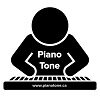This is my review on a super cool new product from Korg – the Korg Liano digital piano. Let’s check it out!
What is the Korg Liano? It’s kind Of 2 Things . . .
- it’s a great entry level option for someone who wants a digital piano that is focused on piano players . . . but at only $330USD isn’t going to break the bank
- AND it’s a fantastic SUPER portable option for someone who has an acoustic or fully weighted digital piano but wants something that’s easier to move around as a 2nd keyboard – as a matter of fact, the Liano is now my new favorite option for this need
So what do I mean by those 2 things:
- By “Focused On Piano Players” I mean a keyboard that preferably has more than 61 keys, (actually . . . preferably 88 keys), doesn’t need a LOT of sounds or bells and whistles like rhythms or accompaniment, but should have good piano, electric piano and organ sounds, and it should have an action that provides a bit more of a . . . “pianistic playing experience”; so something that is or feels semi-weighted, and also something with TRUE full size keys as opposed to most non weighted synth action keyboards that say they have full size keys
- And by “SUPER” portable, I mean something that’s nice and easy to take to a rehearsal, or to a low key performance like busking or playing in a cafe; so something that is MUCH lighter than fully weighted digital pianos which usually weigh at least around 25 pounds – so basically something around 15 lbs or even lighter, and it should also have the option to run on batteries
So when I first heard about the Korg Liano and checked out the specs and some of the initial reviews online, I have to admit this keyboard looked pretty promising! I saw one for rent in my local music store, so I jumped at the opportunity to rent the Liano and check it out!
Portability
So the first thing I HAVE to talk about with this keyboard – is that the Korg Liano has 88 keys . . . but ONLY WEIGHS 13 pounds! This is without a doubt the lightest 88 key keyboard that I know of on the market. And it’s not only super light, it’s also INSANELY slim at UNDER 3 INCHES thick!!! So between the weight and the small form factor, when you add in the fact that the Liano can also run on 6 AA batteries?
Well that definitely satisfies the “SUPER portable” requirements with flying colours. My Yamaha PSR-EW425 has fewer keys at 76, and it weighs almost 20 pounds, and my P-125 digital piano is twice as heavy as the Liano at almost 26 pounds.
User Interface
The user interface on the Korg Liano is crazy simple to use; it does unfortunately require key combinations for changing SOME settings (which I am NEVER a fan of), but MOST of what I would need to do is available with the onboard buttons and controls. There’s a volume knob, a button to toggle reverb on or off, a dial to choose your voice (and all the voices are labelled), and that’s pretty much that.
Since this is an 88 key keyboard, there’s no need for octave switching buttons, but there are a couple of other functions that I honestly don’t use TOO much, so it’s not the end of the world having to use key combinations on those; but it would be nice if Korg could add just a couple more controls or buttons to take care of these: and that would be transposing the keyboard up or down, or turning chorus on or off. You also need to use key combinations to make metronome settings, but I never use a metronome anyways so that doesn’t bother me.
The Keys

So when I first heard about the light weight and how thin the Liano is . . . my next thought was immediately . . . what will Korg’s “LS” key action be like? To be honest, when I first tried it, I was expecting an extremely light, REALLY cheap feeling . . . springy . . . synth action – BUT I was REALLY surprised . . . and in a good way; I really like this action. And the other thing that I was surprised at, and also in a good way, is that the keys are true full size keys – 164 mm octave width, so yes – same as a fully weighted digital piano.
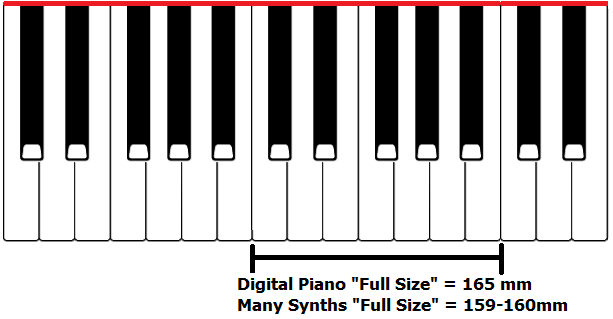
Ok so to try and describe this action: non weighted keyboard actions can be . . . pretty hard to put into words, but here goes:
- the action is obviously MUCH lighter than a fully weighted digital piano, but it is either semi-weighted or just FEELS like it’s semi-weighted, and it has a nice, smooth feel to it, and while it IS a light action, it IS pretty . . . pianistic in how it responds. I’m used to playing fully weighted digital pianos, and I find the Liano’s action to be a lot more familiar feeling and easier to adjust to than the super light and REALLY springy action on Yamaha PSR-E series keyboards or the almost semi-weighted but kind of “mushy” feeling action on the Casiotone CT-S1, CT-S400 and CT-S500. And, these Yamaha and Casiotone keyboards all have the narrower octave width, which is definitely not my preference
- The Yamaha Piagerro NP-32 was a keyboard I reviewed VERY early on in my channel; it’s actually been around for quite a long time and is also . . . probably the most SIMILAR overall product to the Korg Liano; the NP-32 has Yamaha’s “Graded Soft Touch” keybed, which while not being weighted, IS actually graded, with slightly more resistance on the left than on the right just like a piano is; and the action on the NP-32 is definitely more “pianistic” feeling than the Yamaha PSR-E series or Casiotone keyboards, but the one knock on the NP-32’s action though is that the keys are that narrower octave width again
OK so after all of that? I can without a doubt say that the Korg Liano’s action is my favorite out of all of the above, and . . . by a large margin. While it would be ideal if it was just a TINY bit heavier feeling, I find it to be super smooth, natural and familiar feeling to play; it’s NOT at ALL a big adjustment to play the Liano after spending hours on my fully weighted Yamaha DGX 670. And a big part of that is that it has all 88 keys, and that they are true full size. And while the finish on the keys isn’t a visible matte like the CT-S1, they ARE a bit less “shiny and smooth” than the keys on the PSR-E series or the Piagerro. And there are 3 levels of touch sensitivity available; I found the “hard” selection on mine to be the most natural feeling.
The Voices
The Liano only has 8 sounds, but . . . they are bread and butter sounds, and MOST of them are quite good. The sounds are easily selectable with a labelled knob on the front panel. And, the Liano has an impressive 128 notes of polyphony which is quite a bit at this price point, and it also has reverb and chorus for effects. There are 2 pianos, 2 electric pianos, a harpsichord, pipe organ, jazz organ and strings.
In my opinion, the best voices (and the ones that I would use exclusively if I owned this) would be: the main piano sound, which is a really well sampled Italian grand inherited from the Korg Nautilus, the Rhodes electric piano, and the jazz organ. Here is a quick demo of all the voices on the Korg Liano:
Ok so something important to mention with regard to the voices on the Liano, is that the Liano includes access to a couple of free MIDI sound bank apps from Korg, at about an $80 value, that add tons more voices to the Liano. And on that note, I’d like to go over the connectivity features next, because the Liano has one REALLY AWESOME feature that makes using Korg’s (or any other MIDI sound source app) far better. So, let’s move on to connectivity!
Connectivity
Ok for connectivity, the Liano has:
- A 1/8” stereo headphone output, which doubles as your line out to connect to external audio equipment; it really is a shame that Korg didn’t include LR lineouts, which would really appeal to gigging musicians looking for a lightweight board, especially given how awesome the speakers are; but . . . the headphone port does work
- There is a generic ¼” sustain pedal port, and there IS a basic brick switch pedal included with the Liano
- And the final bit of connectivity is the USB to host port for connecting the Liano to a device like an iPad; now THIS is where that awesome connectivity feature comes in: this port has a built in audio interface; on most keyboards, this port only sends MIDI data, but on the Liano it also sends audio in BOTH DIRECTIONS!
- This is something Yamaha has been including in many of their keyboards and digital pianos for years that for some unknown reason, Casio has never done, and it is an amazing feature; it allows you to do a few very cool things:
- You can send high quality direct audio to your phone’s camera app to record a piano performance video AND you can also send high quality direct audio to a DAW recording app like Garageband on an iPad to easily record an audio track and you can do all of this WITHOUT needing an external audio interface box like a Focusrite Scarlett, which you WILL need to do the same thing on a Casio or Casiotone
- And since audio goes in BOTH directions, you can use this as an audio in to stream backing tracks or any other audio FROM your device IN to the Liano’s headphones or speakers
- And the audio interface feature is what makes using MIDI sound bank apps way cooler! On a keyboard WITHOUT this feature, you can still connect it to an iPad and use MIDI to trigger the sounds in the app BUT . . . you only HEAR those sounds on the device, NOT on your keyboard – with the Liano’s built in audio interface, the audio from your device is automatically sent back to the keyboard so you hear it (along with whatever you are playing), through the headphones and speakers, and without any noticeable latency!
- So on THAT note, let’s move on to Apps so I can demonstrate all of this
Apps – External MIDI Sound Banks & Skoove
So the Liano includes access to a couple of MIDI sound bank apps from Korg: Korg Module, which is basically a sound bank offering a bunch of additional sounds, and “Korg Gadget 2 Le” for DAW music production, and it also offers some additional sounds. So I’m not going to do an in depth demo of these apps, but I will show the basic functionality in this video:
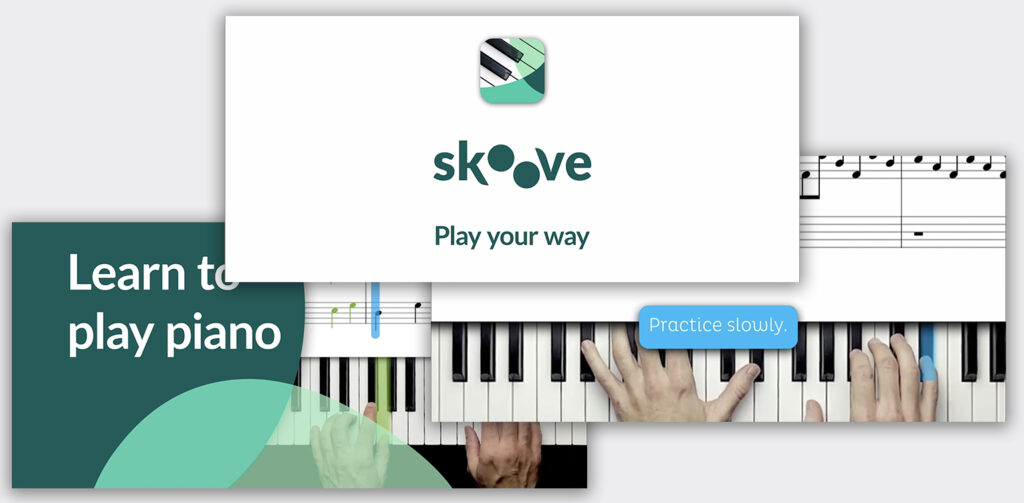
Another app to mention is the Skoove piano learning app; this is a cool app for learning how to play piano, and you get a free 3 month subscription with your Liano purchase, so definitely worth checking out.
Speakers

The speakers on the Korg Liano are REALLY surprising, and in a good way – for a keyboard that weighs SO little and is SO thin, the 2×8 watt bass reflex speakers, for a total of 16 watts sound loud and full and do not distort even at high volume. The bass reflex means they have extra vents or ports that improve the bass significantly, and there’s NO doubt that this is true.

Here is a quick video demonstrating the speakers just as picked up by my iPhone’s built in mic.
What’s Missing?
Well no keyboard is perfect, but there are a few things I REALLY wish the Liano had:
- LR line outs for connecting to external audio equipment like amps, PA systems or audio interfaces; this is especially a shame because the speakers are SO good – if the Liano had LR line outs, it would become a real good budget 88 key gigging option since you’d be able to use these speakers as monitors to hear yourself while you play – since you have to use the headphone port if you’re gigging you won’t be able to hear your speakers at the same time
- With 128 notes of polyphony, it would be cool to see Korg add layers and splits to the Liano
- I wish Korg could add just a COUPLE more voices, I’d actually love to see them remove the 2nd piano and the harpsichord voices, and replace them with a Wurlitzer electric piano and a bass guitar
The Verdict

So the verdict on the Korg Liano? If you’re looking for an 88 key super portable piano option that has great piano, electric piano and jazz organ sounds, and provides a reasonably pianistic playing experience with a smooth semi weighted feeling action and true full size keys, and you don’t want to spend a ton of money? The Liano is a fantastic option, especially with the surprisingly good speakers, and all of the extra functionality that the built in audio interface provides. I can definitely HIGHLY recommend the Korg Liano; it is, without a doubt, my new recommended entry level portable piano option; I would definitely opt for the Liano over the Alesis Recital, the Yamaha PSR-E373, the Roland GO:Piano and even the Casiotone CT-S1 (unless you wanted a 61 key option that’s even smaller).
So I’ve left some Amazon affiliate links below if you want to check out current prices on the Liano in your area, as well as some links to some online piano training I recommend. So if you enjoyed this review, please feel free to smash the like button and subscribe to my channel, that does really help me out. So thanks again for stopping by, happy piano shopping and playing, and have an awesome day!
Thanks so much, and happy piano playing! (and piano shopping 😉 )
I have included links below to Amazon so that you can check current pricing – please note that as an Amazon Associate I earn from qualifying purchases
Piano Training I Recommend
I’ve taken a number of online piano courses; the ones I’m listing here are my favorites and I can highly recommend any of these if you are looking for some online training to get started on learning piano, or to take your current skills to the next level.

If you’re looking for the least expensive way to get started on piano, Pianoforall is a great option. It’s a unique course created by Robin Hall that uses downloadable eBooks with embedded videos and audio instead of a website.

This course is an amazing option for learning piano from beginner up to being able to perform; it teaches multiple genres of music and focuses on how to be a “one person band” on the piano. This course is taught by pro pianist Steve Lungrin – Steve has been teaching and performing his whole adult life and is a fantastic instructor and performer.
I took this course from 2020 to 2021 and it elevated my playing from a very basic level to being able to play songs in multiple genres.
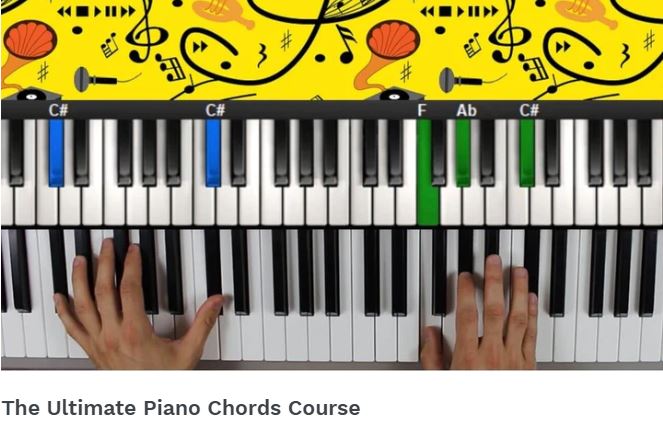
Bird’s Piano Academy Ultimate Chords:
This is a fabulous online course from Arthur Bird at Bird’s Piano Academy. It will take you from total beginner to a pretty decent level of playing; I’ve been playing for 4-5 years at the time I started this course, and while the first half was review for me, the last half is taking my play to a new level. There’s a massive amount of content in here that will last me quite a while!
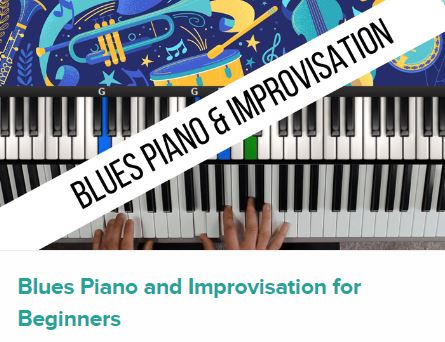
Bird’s Piano Academy Beginner Blues:
If you like the blues, and (or) want to ramp up your improv/soloing abilities on the piano, this is a GREAT course. It’s taught by Arthur Bird, who has a number of courses available on blues, jazz, as well as just getting started on piano. I found his beginner blues & improv course in 2022 when I “hit a wall” in my soloing abilities, and it really helped my improv and soloing in a big way.

This is a fantastic option if you are mostly interested in rock music. This course was created and is taught by Marine Lacoste, who is not only a fantastic instructor & pianist, but she is also a very accomplished hammond organ player – she performs regularly with her own band, as well as playing keys regularly for multiple recording artists on tour. I started this course in 2023 when I joined a band, and it is helping me greatly in taking my playing to a new level
If you sign up for Online Rock Lessons yearly subscription, use code PIANOTONE at checkout to let Marine know I referred you, and she will give you some free bonuses!
